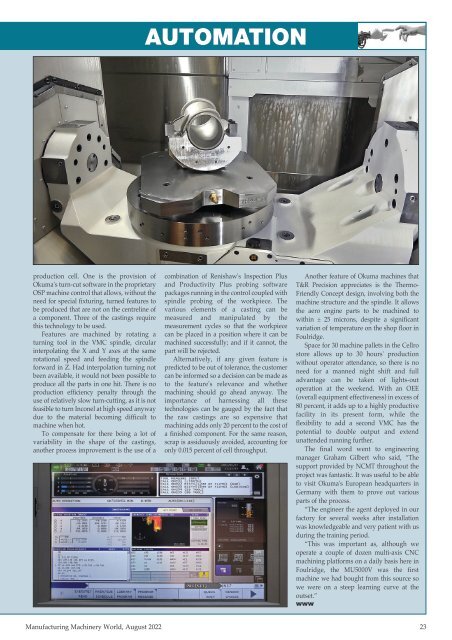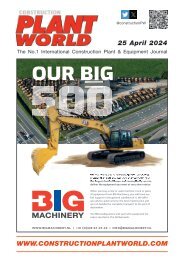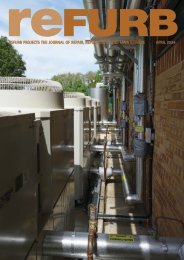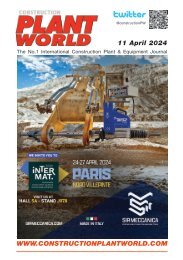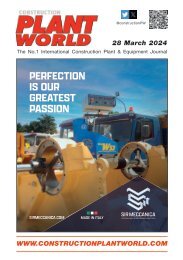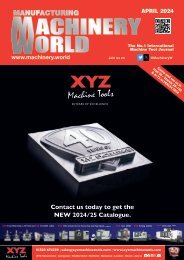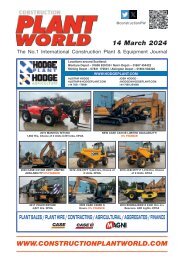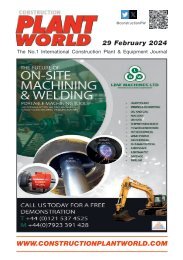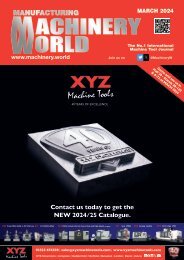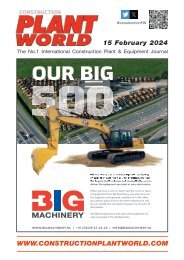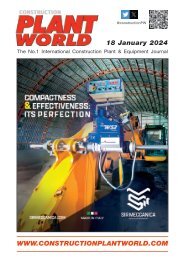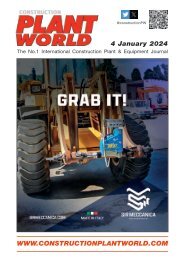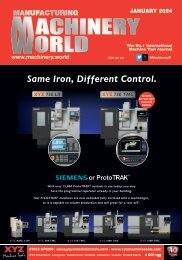Manufacturing Machinery World - August 2022
Machinery World was launched in 1982 to serve the machinery & production engineering market. Editorially Machinery World is a news and information source that gives direct contact with the provider of innovative services and equipment. Editorial is available both online and as hard copy.
Machinery World was launched in 1982 to serve the machinery & production engineering market.
Editorially Machinery World is a news and information source that gives direct contact with the provider of innovative services and equipment. Editorial is available both online and as hard copy.
Create successful ePaper yourself
Turn your PDF publications into a flip-book with our unique Google optimized e-Paper software.
AUTOMATION<br />
production cell. One is the provision of<br />
Okuma's turn-cut software in the proprietary<br />
OSP machine control that allows, without the<br />
need for special fixturing, turned features to<br />
be produced that are not on the centreline of<br />
a component. Three of the castings require<br />
this technology to be used.<br />
Features are machined by rotating a<br />
turning tool in the VMC spindle, circular<br />
interpolating the X and Y axes at the same<br />
rotational speed and feeding the spindle<br />
forward in Z. Had interpolation turning not<br />
been available, it would not been possible to<br />
produce all the parts in one hit. There is no<br />
production efficiency penalty through the<br />
use of relatively slow turn-cutting, as it is not<br />
feasible to turn Inconel at high speed anyway<br />
due to the material becoming difficult to<br />
machine when hot.<br />
To compensate for there being a lot of<br />
variability in the shape of the castings,<br />
another process improvement is the use of a<br />
combination of Renishaw's Inspection Plus<br />
and Productivity Plus probing software<br />
packages running in the control coupled with<br />
spindle probing of the workpiece. The<br />
various elements of a casting can be<br />
measured and manipulated by the<br />
measurement cycles so that the workpiece<br />
can be placed in a position where it can be<br />
machined successfully; and if it cannot, the<br />
part will be rejected.<br />
Alternatively, if any given feature is<br />
predicted to be out of tolerance, the customer<br />
can be informed so a decision can be made as<br />
to the feature's relevance and whether<br />
machining should go ahead anyway. The<br />
importance of harnessing all these<br />
technologies can be gauged by the fact that<br />
the raw castings are so expensive that<br />
machining adds only 20 percent to the cost of<br />
a finished component. For the same reason,<br />
scrap is assiduously avoided, accounting for<br />
only 0.015 percent of cell throughput.<br />
Another feature of Okuma machines that<br />
T&R Precision appreciates is the Thermo-<br />
Friendly Concept design, involving both the<br />
machine structure and the spindle. It allows<br />
the aero engine parts to be machined to<br />
within ± 25 microns, despite a significant<br />
variation of temperature on the shop floor in<br />
Foulridge.<br />
Space for 30 machine pallets in the Cellro<br />
store allows up to 30 hours' production<br />
without operator attendance, so there is no<br />
need for a manned night shift and full<br />
advantage can be taken of lights-out<br />
operation at the weekend. With an OEE<br />
(overall equipment effectiveness) in excess of<br />
80 percent, it adds up to a highly productive<br />
facility in its present form, while the<br />
flexibility to add a second VMC has the<br />
potential to double output and extend<br />
unattended running further.<br />
The final word went to engineering<br />
manager Graham Gilbert who said, “The<br />
support provided by NCMT throughout the<br />
project was fantastic. It was useful to be able<br />
to visit Okuma's European headquarters in<br />
Germany with them to prove out various<br />
parts of the process.<br />
“The engineer the agent deployed in our<br />
factory for several weeks after installation<br />
was knowledgeable and very patient with us<br />
during the training period.<br />
“This was important as, although we<br />
operate a couple of dozen multi-axis CNC<br />
machining platforms on a daily basis here in<br />
Foulridge, the MU5000V was the first<br />
machine we had bought from this source so<br />
we were on a steep learning curve at the<br />
outset.”<br />
www<br />
<strong>Manufacturing</strong> <strong>Machinery</strong> <strong>World</strong>, <strong>August</strong> <strong>2022</strong> 23


